Maria Cristina Didero and the Golden Age of Design: Design Miami/ 2022
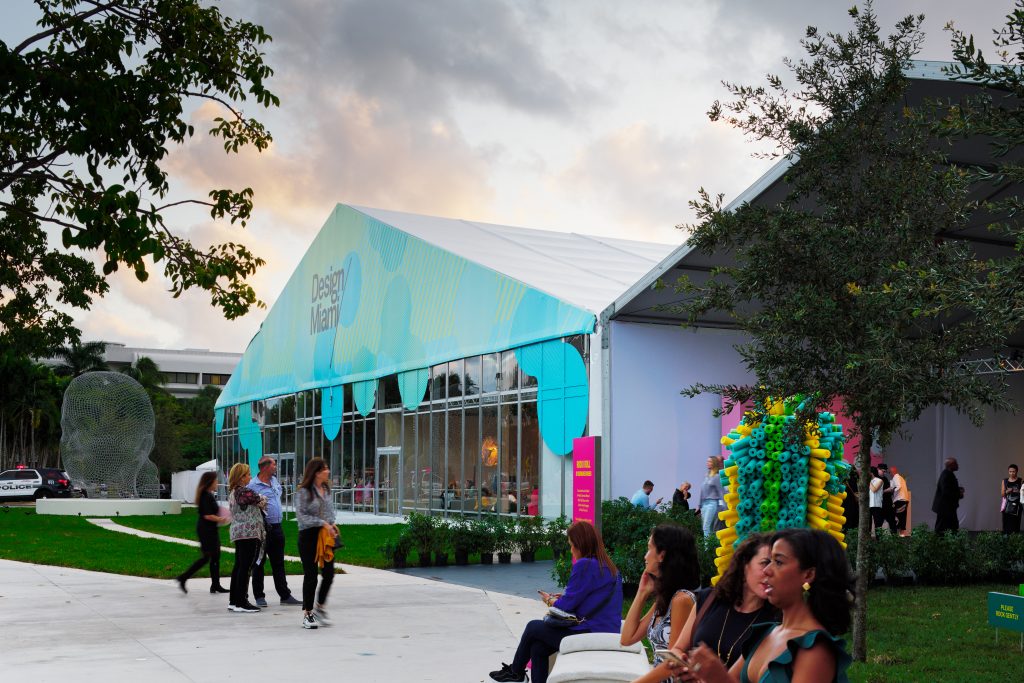
The art and design storm that looms over Miami for the first full weekend in December wrapped up, ushering out a big crowd and millions of dollars with it. In the collective consciousness, each December is closely associated with Art Basel, the Miami Beach iteration of the eponymous Swiss art fair. Design Miami/ is also an annual festival attracting designers and enthusiasts, worldwide. It, too, has a twin fair in Basel, held each June. As usual, galleries and artists set up their booths for the foot traffic, some of whom are in the market to purchase.
Design Miami/ Curatorial Director Maria Cristina Didero wanted to thread the events on opposite sides of the Atlantic together. Under her guidance, Didero’s Design Miami/ fairs had an overarching theme of The Golden Age. A “golden age” usually applies to a period rife with creativity and artistic output. The mind automatically conjures up the Ancient Greeks and Romans, economic prosperity, hedonism, and the societal valuation of aesthetics. It’s not quite the reality we see in front of us today. I asked Didero about her perspective on this theme, and what it meant to her.
“As this theme reaches across vast stretches of human history, we decided to apply a chronological focus. Our Basel fair in June explored the theme through a retrospective lens, under the title The Golden Age: Rooted in the Past, and for the Miami fair, we have propelled the theme forward, under the title The Golden Age: Looking to the Future. This theme allows us to speculate on how contemporary design might pave the way to a better, more sustainable collective future, through innovations in the arts, sciences and technology – all under the umbrella of great design.”
The Golden Age prompts optimism, and asks participants to strive for a Common Good through design. What does our future’s Golden Age look like? In the booths, we saw a return to the collective, and to the sacred. While some may think of technology and steely moving parts when they dream of the future, some booths at Design Miami/ looked back, in order to look ahead. New York-based Ippodo Gallery, who Didero cites as a first time-presenter, held a magnifying glass to honour and inspect contemporary Japanese craft. On display were kogei-focused bowls, emphasising surface and textural quality. The standout of Ippodo’s “Extreme Surfaces” boot was Ji An’, or Tea House (1993) by Shigeru Uchida. Not only was this full-sized structure a showcase of Japanese bamboo and Hinoki craft, it was a presentation of Chashitsu, or tea ceremony culture. Tea ceremonies are a ritual in Japanese culture, emphasising the generosity of the host, as well as taking time away from any fast-paced callings of day to day life. Perhaps Ippodo’s presentation can be read through the Golden Age lens as a futuristic ideal, where we value returning to a state of sharing and tranquility on a more regular basis.
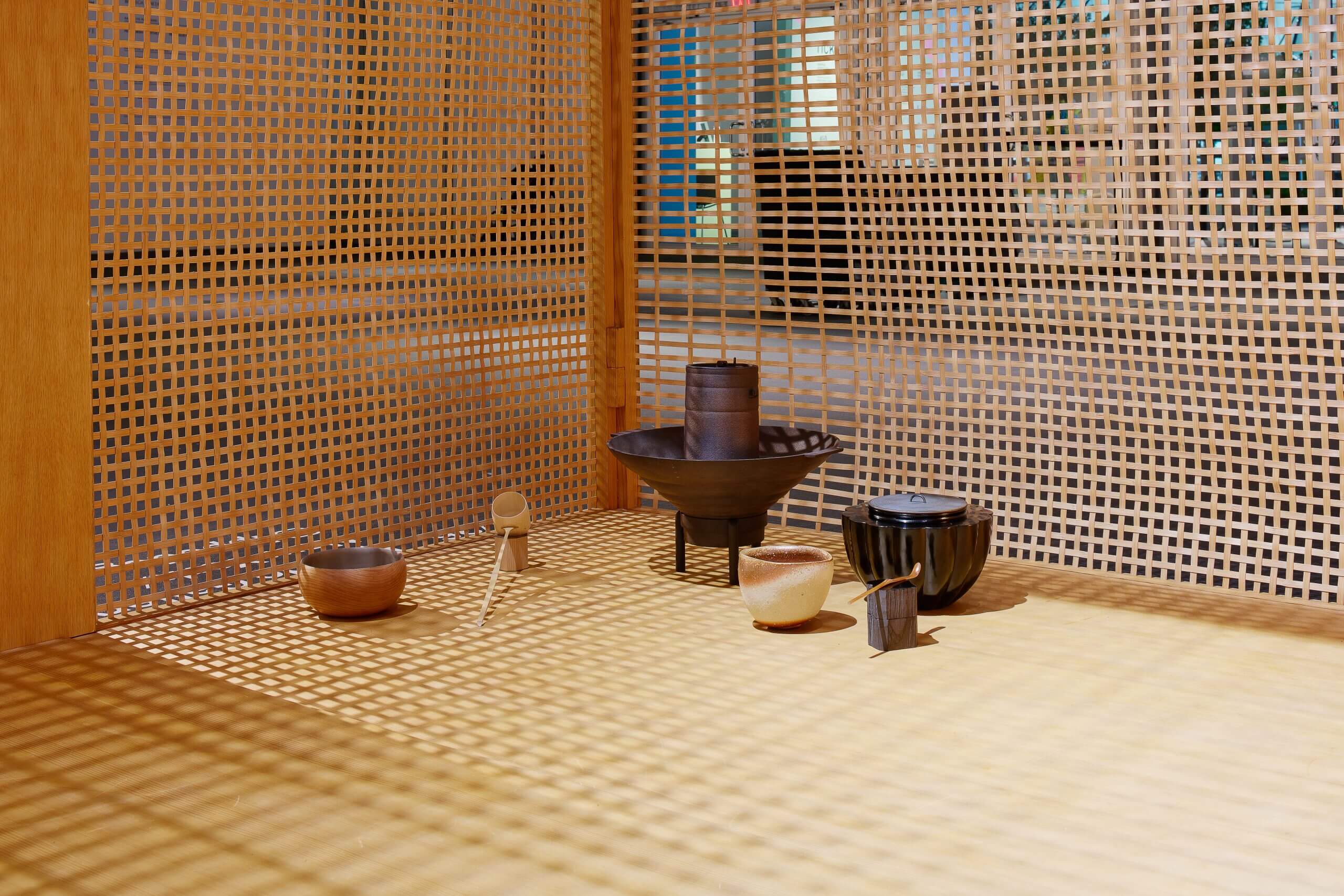
The Chashitsu 茶室 Tea Room: Elements of the Tea Ceremony (2022)
Photo credit: James Harris
Similarly, Nada Debs and Kohler presented Transcendence, a take on the Middle Eastern hammam, patterned with tiles crafted from landfill waste. A space for collective relaxation, Debs’ hammam invites guests to meditate and disconnect within its three-room structure. Perhaps what designers want in our futuristic Golden Age is to turn to other non-Western cultures to cultivate a little peace and quiet. I was fascinated with these two standout pieces; the desire to present enclaves shrouded from reality and all of its chaos. It’s quite odd how after such an altering span of time, our past lives reformed themselves so quickly – and at such a fast pace – whether it be our day-to-day routines or our consumption habits. A lot of the Design Miami/ exhibitions highlighted themes of sustainability, which Didero notes in our interview. Sustainability usually denotes environmentalism – which was the normative track followed by many exhibitors at the fair – it can also relate to our energy, our capacity for connection, and our creativity. While we figure out ways to sustain our planet, we have to figure out ways to sustain ourselves such that we don’t feel burnt out at a baseline.
How did you initially gravitate towards design, and then branch out in so many different ways – in terms of different avenues like curating, editing, etc.?
I’ve had a lifelong love of design. As a child, I was always observing the things around me, and from a young age, I began to collect objects – any kind of objects – that inspired me in some way. I loved to see what they could each teach me about design but most of all I was always asking myself if there were other ways to create the same thing. Growing up in Rimini, on the east coast of Italy, I was not taught about the concept of a curator, so learned a lot about design through independent, self-education and, most of all, with different kinds of collaborations in the field. Fourteen years at the Vitra Design Museum, I worked in close contact with co-founder Alexander Von Vegesack. My formal training in design came a little later.
This wonderful experience firmly rooted my career in the design world. However, I believe that my early years, spent discovering design independently through any means possible, led me to the multidisciplinary approach that I adopt today, which has led me down numerous exciting avenues, including curating and editing, among others.
Speaking of which, this was your first time curating Design Miami/ – congratulations! In what ways are you bringing in your prior experiences to this role? I know you’re an independent curator, and the Milan editor of Wallpaper* Magazine…
Curating this year’s Design Miami/ fairs in Basel (June) and Miami (December) has been a very exciting opportunity to collaborate with the fair team, sharing my curatorial approach and learning from their years of experience in working for the most relevant global platform for collectible design. My past work has generally taken a very holistic, collaborative approach – working with creators from across the creative industries, advising designers and advising companies, writing and editing books and films. This is certainly a tradition I’ve enjoyed maintaining through my work with Design Miami/. We’re thrilled to have brought such a diverse and exciting list of exhibitors, partners and collaborators to this year’s programming.
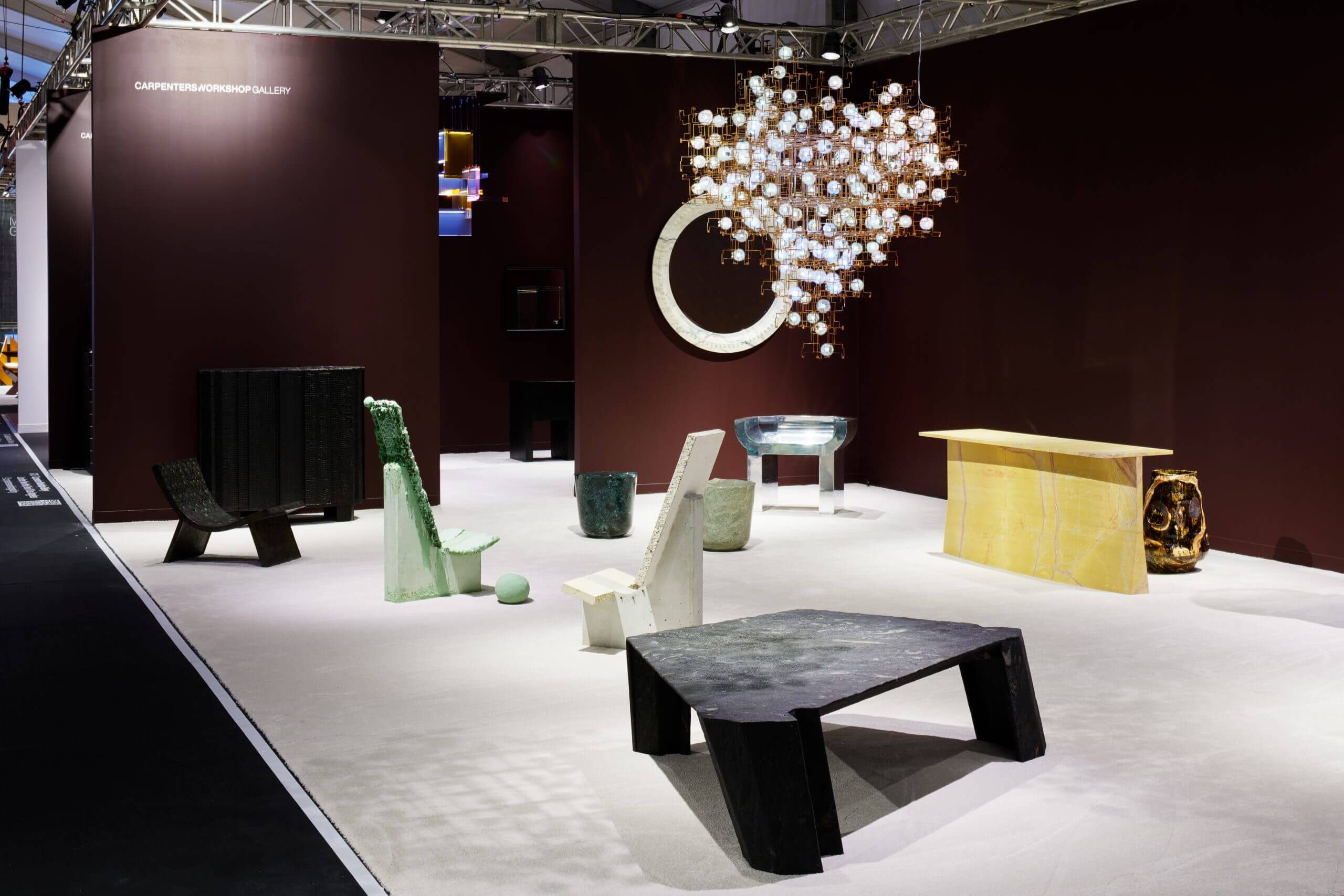
Photo credit: James Harris
What’s the biggest thing you’ve learned while curating a fair of this scale, so far?
Of course, to produce any event on the scale of a Design Miami/ fair, preparation is key. Particularly over the last few years, as we’ve lived through times of great uncertainty and change, myself and the whole Design Miami/ team have adopted a particularly flexible approach, adapting our fairs so that with every edition, we can be sure we’re responding to the needs of our loyal audience of collectors, design industry experts and enthusiasts alike. This often means ensuring our programming is available to audiences all around the world, via our digital platforms so that people everywhere can access great design, and join our conversations around how design can lead the way to a better, brighter and more sustainable future.
You have said, “Design is about people, and not about chairs.” How do you want the 2022 edition of Design Miami/ to reflect this mantra, if at all?
This quote refers to my humanistic design approach. Above all, I’m interested in people and how they interact with the world around them. I’m interested in knowing why and how they decide to create an object and how they make their choice of materials, shape, color, and so on. I see this as the starting point for all good design. This approach is a thread that unites my curatorial work. The 2022 thematic, The Golden Age, explores myriad demonstrations of the ways in which brilliant design can shape the way we have lived, do live, and will live together in the future.
I hope the fair’s programming will inspire and excite audiences to think about how design could change the world for the better. Of course the idea of the Golden Age is a narrative expedient, a wish, an optimistic slant in a dark period as the one we are living but we take it as a tool for inspiration for better times.
Are there any parts of the fair that you’re looking forward to most? Is there anything new and exciting that audiences should highly anticipate?
With any curatorial project, I am always most excited to see how people will respond to our presentation as a whole, as this is where the interesting conversations begin. Design, alone, cannot change the world, unfortunately – you need people too. Every year, Design Miami’s fairs bring together people from across the design community and beyond, offering a platform for creative exchange, so I am excited to discover how our show will inspire our audiences.
I’m also very much looking forward to see some galleries making their debut at the Miami fair – Ippodo Gallery, presenting Japanese art and culture; Gallery Negropontes, which will make its Miami debut with a presentation of designers and craftspeople who are reinventing the French decorative arts; Diletante42, defined by its brilliant Brazilian modern design collection; and Galerie BSL, which will share an exhibition concept that proposes to explore new frontiers in the ability of objects to express life forms. A highlight of the Curio programme is Emma Scully Gallery, known for its thoughtful, contemporary works. At this year’s Miami fair, the gallery is platforming a selection of brilliant women designers. I look forward to discovering these amazing, international works with our visitors from around the world.
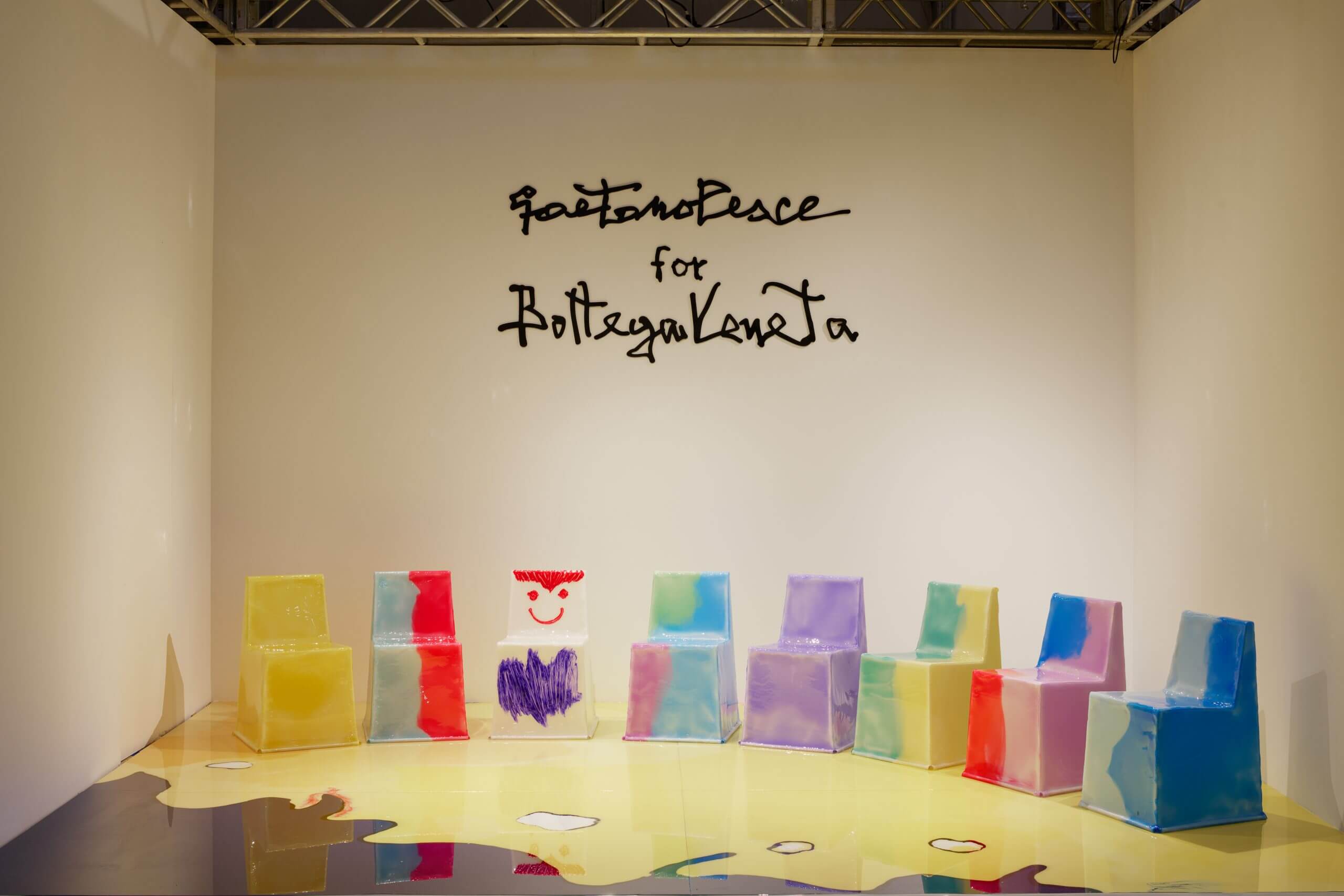
Design Miami/ 2022
Photo credit: James Harris







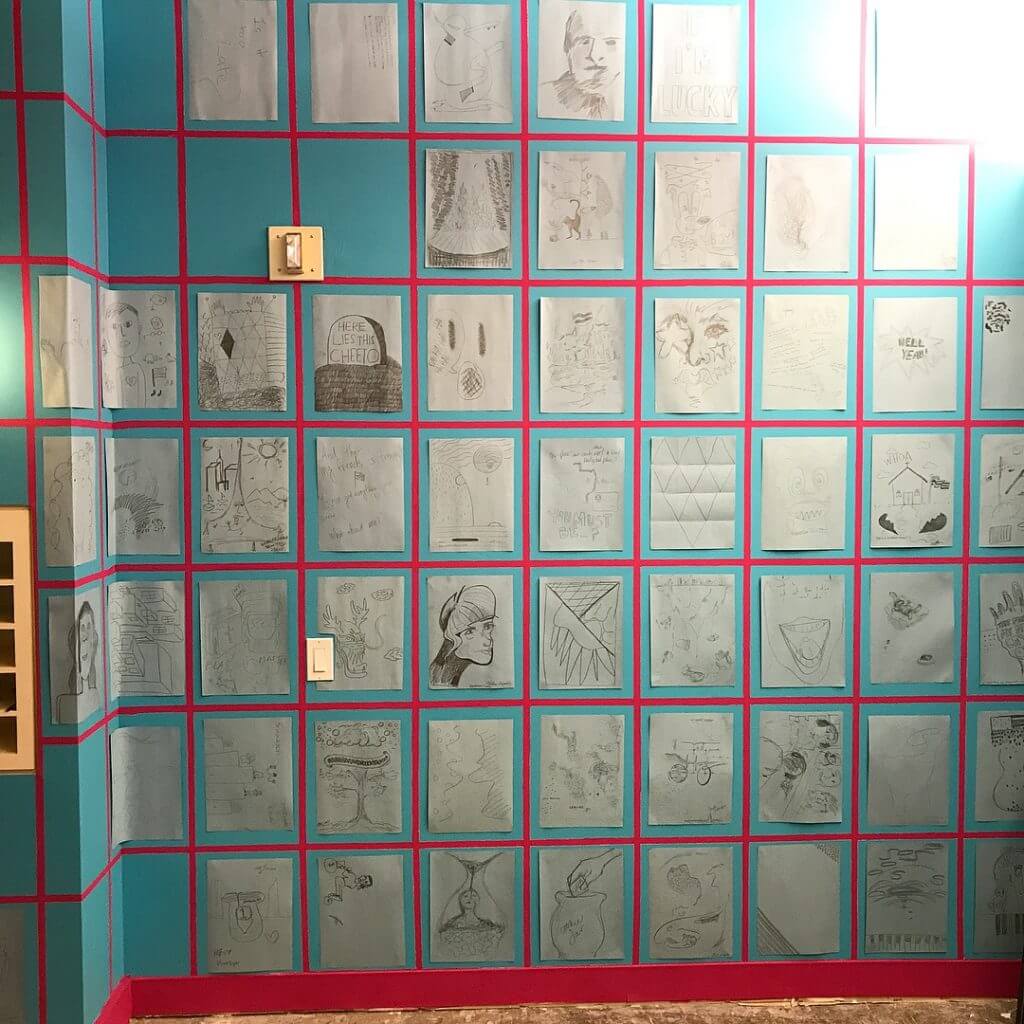
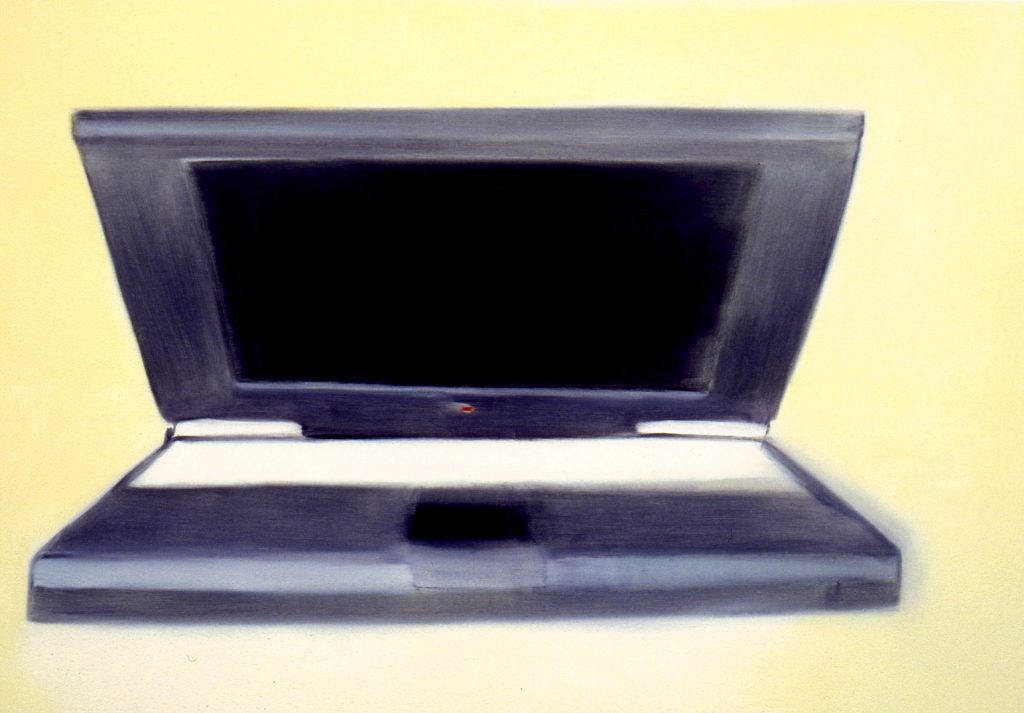
Responses